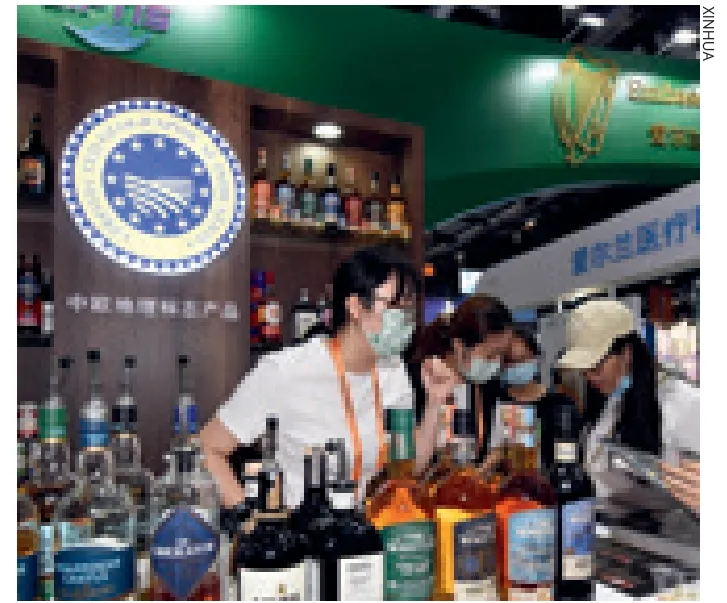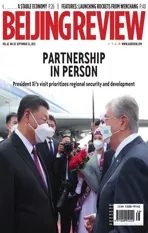In Tempo With the China Beat
2022-09-20ByConorSullivan
By Conor O’Sullivan
China’s extraordinary development,which has shaped the world’s largest middle class, its modernization of foodservice and retail sectors, upgraded infrastructure and broadening market access to foreign products, has made Irish food and drink exports to China more than quadruple in the past decade.
In 2011, Irish food and drink exports to China were worth 169 million euros ($168.8 million). Initially concentrated in a few core opportunities—primarily infant formula and pork, the potential of Ireland’s agri-food trade in China was nevertheless obvious.
The year 2012 saw the then Vice President Xi Jinping’s visit to Ireland in the course of several high-level engagements, which proved to be the catalyst for Ireland’s deeper relationship with China. Heightened cooperation in agri-food trade was a key item on Xi’s agenda.Two months later, Ireland’s then Prime Minister Enda Kenny visited Beijing and signed a range of cooperation agreements to strengthen bilateral trade and relations.
That same year, Bord Bia, the Irish Government’s food promotion agency, opened the Irish Food Hub in Shanghai. More than just an expansion of Bord Bia’s presence in China,the Irish Food Hub doubled as an incubator for Irish companies entering the Chinese market.Since its inception the hub has served as a launching pad for numerous Irish dairy, meat,beverage and seafood operations in China.

Staff of the Ireland pavilion introduce Irish drinks to visitors at the China International Trade Fair for Services in Beijingon September 3, 2021
By the end of the decade, Irish food and drink exports to China had more than quadrupled to over 900 million euros ($899.1 million). Today, as one of Ireland’s most important food and drink partners worldwide,China constitutes a top priority destination.Bord Bia has substantially increased its activity in China, helping to consolidate Ireland’s reputation as a world-class supplier of sustainably produced food and drink.
Several factors have driven Irish exports of foodstuffs and beverages to China.
China’s extraordinary development over the past decade is well documented, especially the expansion of its middle class to become the world’s largest. This social phenomenon has significantly pushed China’s demand for a wider range of premium Irish food and drink. Rising incomes have generated a greater consumer demand for higher quality, more functional, and healthier food and food ingredients. Ireland has been well placed to meet these trends.
The growth of premium domestic and foreign supermarket brands in China and, more recently, the emergence of technology-driven e-commerce and new retail have presented Irish suppliers with a stable route to the market.The gradual phasing out of local wet markets,meanwhile, has bolstered the retail sector as a channel for imported chilled and frozen goods.From a regulatory perspective, cross-border ecommerce has enabled smaller foreign brands to become established and flourish in China,and also protected consumers and companies alike from counterfeits and grey imports.
Similar changes are apparent in the foodservice sector. China’s embrace of a globalized diet has created a market for food ingredients from around the world.Concurrently, the remarkable pace of innovation in China’s restaurant sector has given rise to new use cases for ingredients. Examples include modern interpretations of hotpot that have vitalized and highlighted previously underappreciated meat cuts, as well as undreamed-of applications for cheese, from cheese-topped milk teas to cheddar ice cream.Foodservice brands have also expanded beyond the confines of restaurants through home delivery and ready-to-eat meals.
Infrastructure development is an often understated yet critical element of China’s success story. The country’s investment in its airports, seaports and coldchain logistics in particular, has made the import of fresh, chilled,and frozen food that is accessible to consumers throughout the country both physically possible and financially viable. It has moreover opened up entire population centers as new market opportunities. Ireland’s seafood industry can now airfreight live Irish oysters and blue lobsters out of Ireland in pristine condition and ready to serve the next day at Shanghai’s finest restaurants.
The signing of the EU-China Agreement on Geographical Indications, which came into force in March 2021, was another milestone.The agreement included two Irish products: Irish whiskey and Irish cream liqueur.Recognizing and protecting the distinctive production methods of Irish whiskey and cream liqueur have contributed to the quadrupling of Irish drink exports to China in the last three years.
The launches of import-focused fairs,such as the China International Import Expo in Shanghai and, more recently, the China International Consumer Products Expo in Hainan, have created excellent platforms for foreign brands to raise their profile in China.In Hainan, the move toward a free trade zone is another exciting development, embodying China’s drive to open up to ever more highvalue trade opportunities. BR
